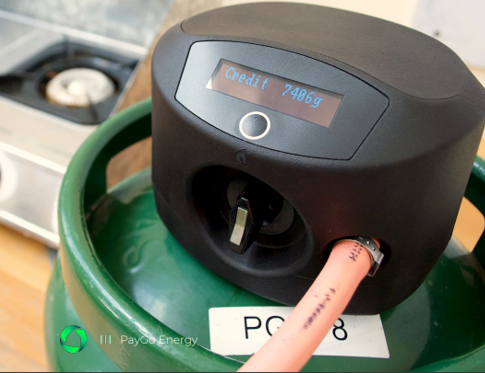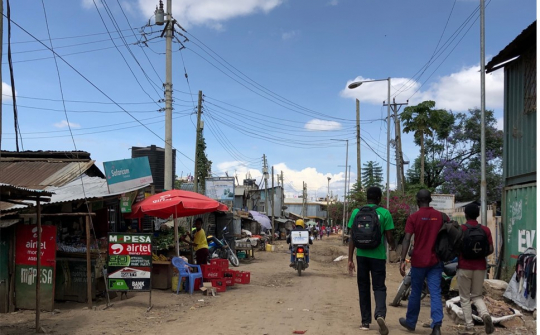With the start of the Russian-Ukrainian war in 2022, energy markets became highly volatile due to sanctions and oil embargos placed on Russia by Western countries. As a result, the price of food and energy increased worldwide due to supply chain disruptions. It seems probable that this caused a substantial rise in the number of households experiencing energy and food security globally.
Data from low and middle-income countries like Kenya indicates that food prices rose by over 15% above 2021 levels [1]. Additionally, the proportion of people suffering from malnutrition or food insecurity in sub-Saharan Africa is believed to have increased by over 30% to 123 million, which is 12% of the continent’s population [2]. While price inflation has been linked to increases in energy and food insecurity, few studies have measured changes in household energy use and food consumption due to rising food and energy prices in LMICs.
Measuring impacts on food and energy security
To measure changes in clean cooking and dietary behaviors, a team of researchers within the SETI network used smart meter data from a pay-as-you-go liquefied petroleum gas (PAYG LPG) company, called PayGo Energy, that operates primarily in Kenya. PAYG LPG is a consumer finance mechanism that allows consumers to purchase LPG credits in small increments (via MPesa, a mobile money service available in East Africa) [3]. PAYG LPG companies have typically operated in urban areas to provide clean cooking access to resource-poor households who would otherwise be unable to afford the upfront costs of LPG equipment.
In sub-Saharan Africa, LPG is viewed as a highly scalable clean fuel in the short- to medium-term expansion as it requires less infrastructure than grid or off-grid electricity [4]. Although LPG is a fossil fuel, transitioning to LPG for cooking can benefit the climate through reductions in localized deforestation (from unsustainable harvesting of wood fuel or for charcoal production) [5] and reductions in emissions of black carbon relative to combustion of polluting fuels (e.g. wood, charcoal). It is estimated that 27–34% of wood harvested for fuel globally is unsustainable, with East Africa in particular being a hotspot for deforestation [6].
The smart meter data was used to measure the kilograms of LPG consumed and the length of time using LPG among PayGo Energy’s customers living in an informal settlement in Nairobi, Kenya in 2021 versus 2022 to quantify potential changes in PAYG LPG use during an inflationary period. From August to September 2022, the team also administered surveys and conducted focus group discussions to contextualize the findings from the smart meter data.
Changes in cooking patterns
The study revealed that three-quarters of PayGo Energy customers were forced to change their cooking or dietary patterns in 2022. Customers decreased the monthly amount of money they spent on PAYG LPG by nearly four-fifths in July-October 2022 relative to July-October 2021. This is likely because of less income for fuel payments due to a higher proportion of money spent on food. Less money available to spend on PAYG LPG in 2022 led to a decline in average per capita monthly consumption by two-thirds between 2021-2022.
Impact on food security
Less than half of the 700 surveyed households of households were food secure in 2022. Almost all customers reported that food prices increased in their community in 2022. Nearly two-thirds of households chose different food, half skipped more meals, and one-third lowered their PAYG LPG consumption due to higher food prices in 2022. Compared to approximately half of food-secure households, nearly all food-insecure households had changed the types of meals they cooked in their household, skipped more meals, and/or decreased their PAYG LPG consumption in 2022 relative to 2021.
Consumption of meat and fish declined and some households also reduced their consumption of ugali, which is a Kenyan staple food. This decrease is likely because of supply chain disruptions and a higher cost of maize in 2022 because of the Russian-Ukrainian War as the two countries are major maize exporters [7].
Conclusions
Governments can enact programs that expand income generation options, improve the shelf-life of cooked food in locations where refrigeration is lacking, utilize indigenous crops for processed food production [8], and consider promoting other nutritious food products that are cheaper and/or faster to cook to save energy costs.
The smart meter data analyzed in this study can also be used for real-time tracking of progress towards the Sustainable Development Goals (SDGs), including SDG7 (universal energy access) and SDG 2 (no hunger). As populations continue to interact on digital transaction platforms, such as those offered by PAYG LPG, smart meter data can be further used to promote more targeted social and financial aid initiatives to resource-poor households.
Key findings:
- Over half of households in informal settlement in Nairobi, Kenya were food insecure between August-September 2022
- There was a two-thirds reduction in average pay-as-you-go liquefied petroleum gas (LPG) use between 2021 and 2022
- Monthly fuel expenditure decreased by over three-quarters between 2021 and 2022
- Three-quarters of participants changed types of foods cooked, skipped more meals and/or lowered their pay-as-you-go LPG consumption to manage rising food prices
- This is one of first studies to link rising food prices with declines in clean energy consumption in 2022.
References
[1] Kenya Food Inflation - March 2023 Data - 2010-2022 Historical - April Forecast - Chart. https://tradingeconomics.com/kenya/food-inflation (accessed 2023-04-10).
[2] Baptista, D. M. S.; Farid, M.; Fayad, D.; Kemoe, L.; Lanci, L. S.; Mitra, P.; Muehlschlegel, T. S.; Okou, C.; Spray, J. A.; Tuitoek, K.; Unsal, F. D. Climate Change and Chronic Food Insecurity in Sub-Saharan Africa. Departmental Papers 2022, 2022 (016). https://doi.org/10.5089/9798400218507.087.A001.
[3] Mbiti, I.; Weil, D. N. Mobile Banking: The Impact of M-Pesa in Kenya. In African Successes, Volume III: Modernization and Development; University of Chicago Press, 2015; pp 247–293. https://doi.org/10.7208/chicago/9780226315867.003.0007.
[4] Bruce, N.; Aunan, K.; Rehfuess, E. Liquefied Petroleum Gas as a Clean Cooking Fuel for Developing Countries: Implications for Climate, Forests, and Affordability; KfW Development Bank, 2017. https://ccacoalition.org/en/resources/liquefied-petroleum-gas-clean-coo… (accessed 2021-02-03).
[5] Grieshop, A. P.; Marshall, J. D.; Kandlikar, M. Health and Climate Benefits of Cookstove Replacement Options. Energy Policy 2011, 39 (12), 7530–7542. https://doi.org/10.1016/j.enpol.2011.03.024.
[6] Bailis, R.; Drigo, R.; Ghilardi, A.; Masera, O. The Carbon Footprint of Traditional Woodfuels. Nature Clim Change 2015, 5 (3), 266–272. https://doi.org/10.1038/nclimate2491.
[7] Larkin, H. D. Ukraine War Could Push an Additional 47 Million Into Acute Hunger. JAMA 2022, 327 (19), 1859. https://doi.org/10.1001/jama.2022.7733.
[8] Scott, N.; Barnard-Tallier, M.; Batchelor, S. Losing the Energy to Cook: An Exploration of Modern Food Systems and Energy Consumption in Domestic Kitchens. Energies 2021, 14 (13), 4004. https://doi.org/10.3390/en14134004.
By Matthew Shupler (SETI Fellow) and Belén Pulgar
This is a SIDA funded project in the framework of the SETI 2021 Research Grants for junior researchers



